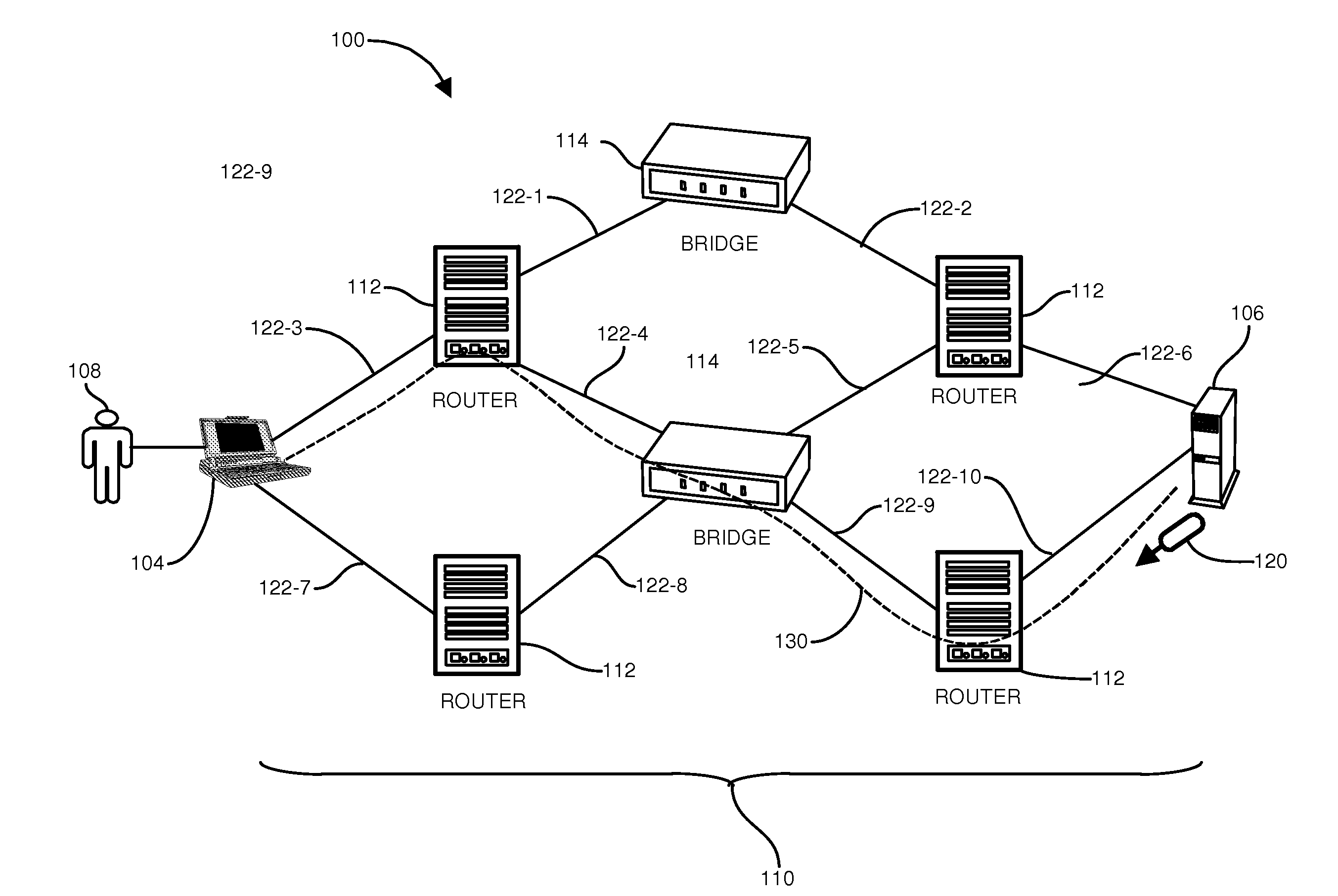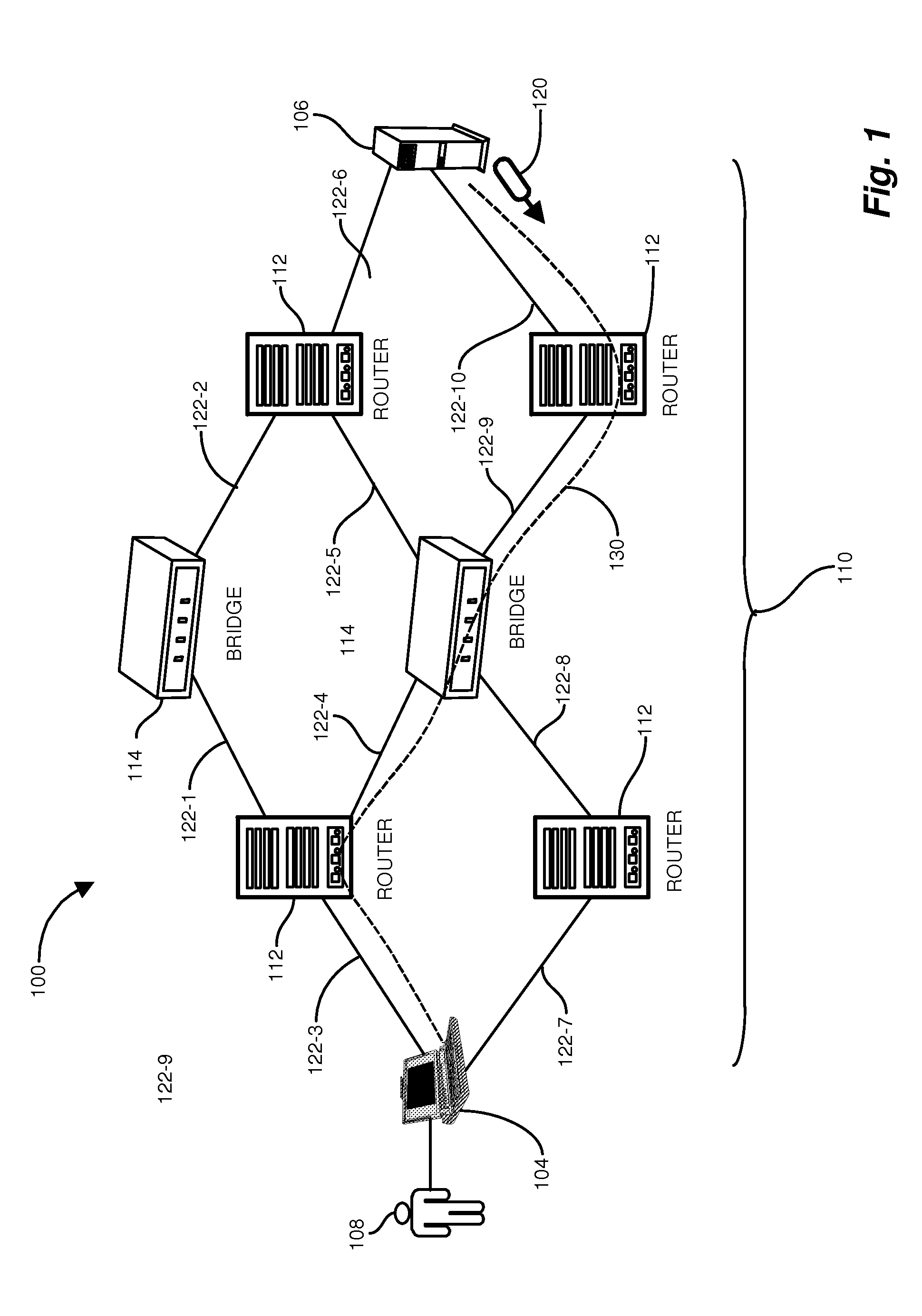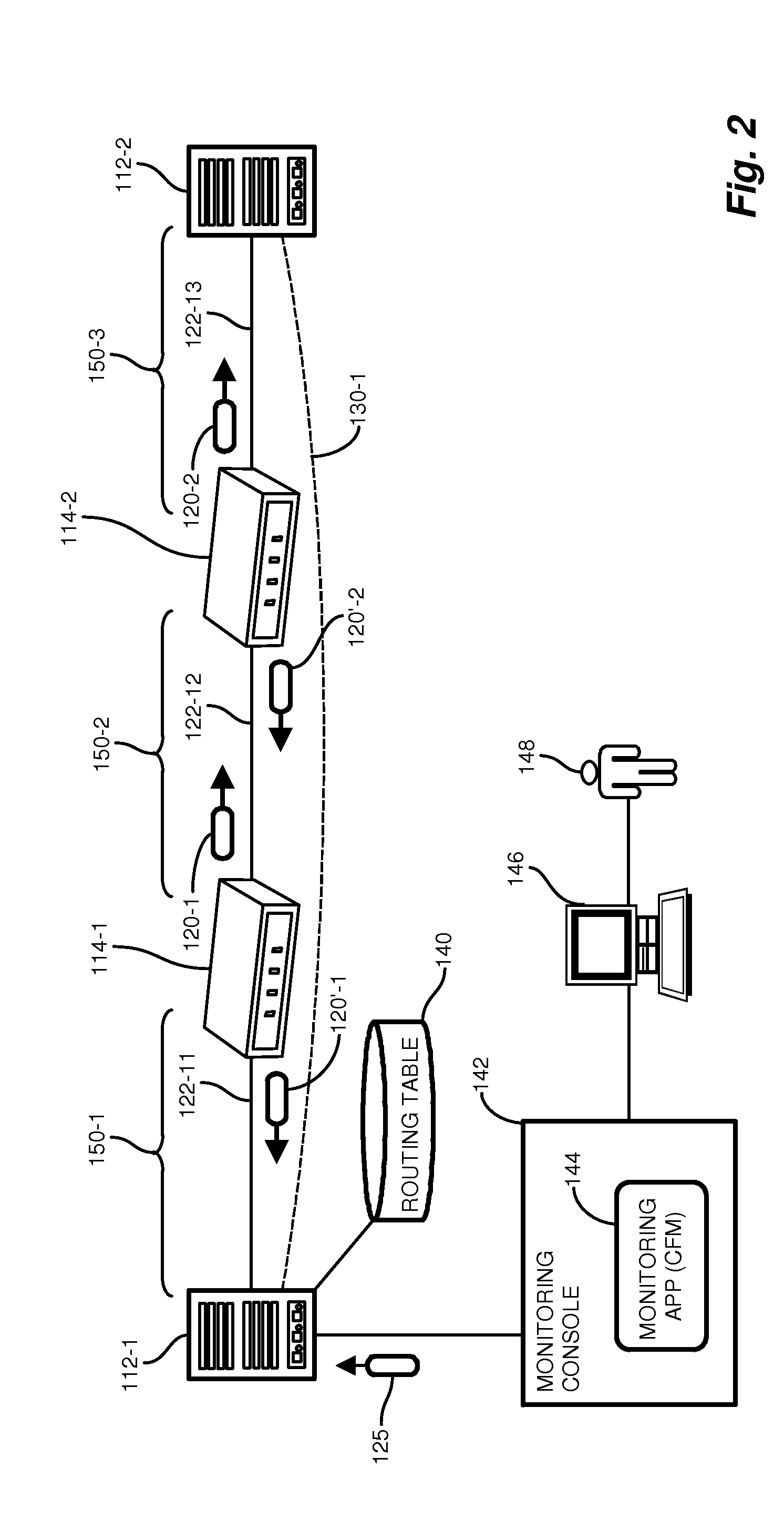Multi-layer network diagnostic tracing
a network diagnostic and multi-layer technology, applied in the field of multi-layer network diagnostic tracing, can solve the problems of network users experiencing service disruption, and the icmp cannot determine which bridge is dropping packets
- Summary
- Abstract
- Description
- Claims
- Application Information
AI Technical Summary
Benefits of technology
Problems solved by technology
Method used
Image
Examples
Embodiment Construction
[0014]Depicted below is an example configuration of a networking environment suitable for use with configurations disclosed herein. An example network such as an SPBM network employs a monitoring application responsive to a network operator for issuing diagnostic commands that result in diagnostic messages sent by the monitoring application to network entities (forwarding entities) on a path for which diagnostic continuity information is sought. In contrast to conventional approaches, which require specific interrogation of L2 entities using cryptic L2 (MAC) labels, configurations herein receive L3 identifiers such as IP addresses, allowing a more intuitive and less error prone user invocation.
[0015]Conventional approaches require an operator to enter MAC addresses on command line parameters, often requiring manual mapping of network entities and is often a tedious process. Other conventional approaches include tracing the Layer-2 identifier to an IP address—which takes source and d...
PUM
 Login to View More
Login to View More Abstract
Description
Claims
Application Information
 Login to View More
Login to View More - R&D
- Intellectual Property
- Life Sciences
- Materials
- Tech Scout
- Unparalleled Data Quality
- Higher Quality Content
- 60% Fewer Hallucinations
Browse by: Latest US Patents, China's latest patents, Technical Efficacy Thesaurus, Application Domain, Technology Topic, Popular Technical Reports.
© 2025 PatSnap. All rights reserved.Legal|Privacy policy|Modern Slavery Act Transparency Statement|Sitemap|About US| Contact US: help@patsnap.com



